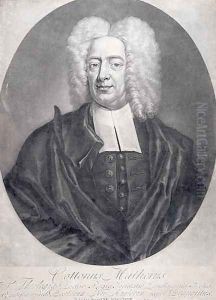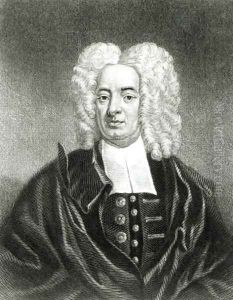Pelham, Peter Paintings
Peter Pelham was an English-American artist and engraver, born in 1697 in London, England. He is known for his significant contribution to colonial American art, particularly in the realm of printmaking and portraiture. Pelham's early life in England laid the foundation for his artistic career, but it was in the American colonies where his work gained notable recognition. In 1726, he emigrated to America, initially settling in Boston, Massachusetts, which was rapidly becoming a cultural and artistic hub in the New World.
Pelham's work in America was diverse, encompassing not only engraving but also mezzotint, a printmaking process that was relatively new at the time and which Pelham mastered to great effect. This technique allowed him to produce rich, tonal images that were ideal for the reproduction of portraits. One of his most famous works is the mezzotint of Cotton Mather, a prominent Puritan minister, which is considered one of the earliest American portraits in this medium. This particular work exemplifies Pelham's skill in capturing not just the physical likeness but the character of his subjects, making his portraits highly sought after by the colonial elite.
Aside from his artistic practice, Pelham was also an educator, teaching young artists and thus contributing to the growth of the artistic community in Boston. His role as a teacher and mentor helped to nurture the nascent American art scene, laying the groundwork for future generations. Pelham was not only a pivotal figure in the development of American art but also interconnected with the broader cultural and social milieu of his time, marrying the widow of John Copley, thereby becoming the stepfather of the famous American painter John Singleton Copley. This familial connection further cemented Pelham's influence in the art world of colonial America.
Peter Pelham died in 1751 in Boston, leaving behind a legacy that was instrumental in the development of American art, particularly in the areas of engraving and portraiture. His work and teaching influenced not only his contemporaries but also the trajectory of American art, making him a key figure in the early art history of the United States.

